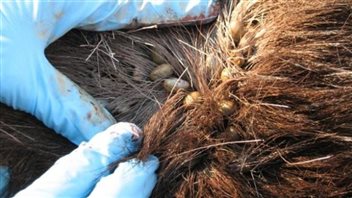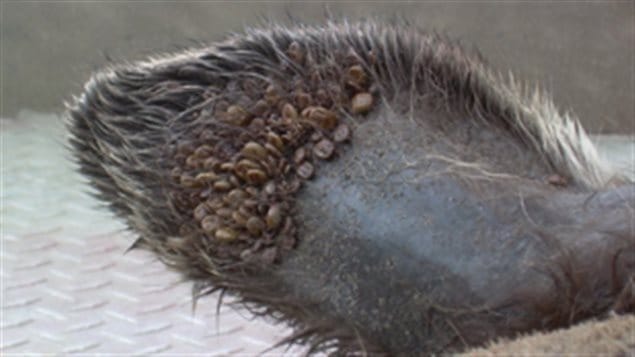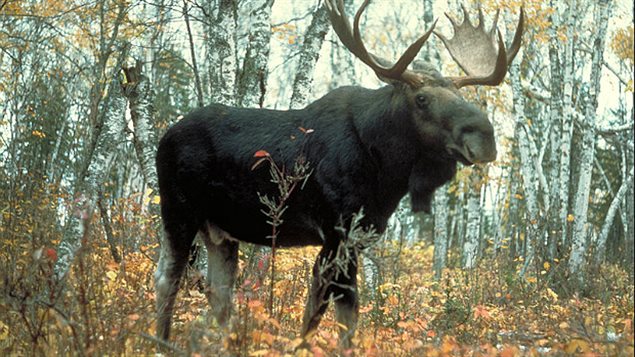The huge, majestic moose, is one of Canada’s iconic animals. However outside of the island province of Newfoundland, Canada’s moose are in trouble, but not from hunters.
The autumn moose hunting season has begun across much of Canada, but in many areas the moose populations are down and in some places, dramatically.
“If you get an adult moose that weighs 1,000 pounds that has 50,000 or 60,000 finger-nail sized ticks feeding on it, the moose can become anaemic simply from the amount of blood loss,”

In Ontario, hunting licences have been cut on average by about 18% to reduce pressure on the population. In one Wildlife Management Zone (28) licences have been reduced from 457 last year , to only 30 this year.
Several factors are being cited including, a harsh winter last year, increased predation from wolves and bear, habitat loss , and parasitic ticks.
Winter ticks moving north, with warming winters

In the northeastern US state of New Hampshire the moose population has declined by almost half over the last 15 years.
A CBC news report cites biologist Kristine Rines, who works for the state’s fish and game department. She says winter ticks are the major cause of mortality.
The ticks wait on bushes in the autumn and latch on to moose (and other animals) fur when they brush past. They burrow their heads into the skin and feed on the animals blood all winter.
Serge Simoneau who has had a controlled hunting area near the Quebec -US border for twenty years, says he first noticed the ticks on moose in his area about ten years ago. Speaking to the CBC he said since then both the number of animals with infestation, and the number of ticks on the animals have increased.
Some have suggested that the ticks have been slowly spreading further and further north due to a warming climate. The CBC article says a Quebec survey shows that about 75 percent of the moose surveyed south of the 50th parallel were carrying winter ticks, but below the St. Lawrence River close to the US border, that percentage climbs to 93 per cent.

In a recent article from Ron Grech in the Timmins (Ontario) Daily Press, Mark Ryckman, senior wildlife biologist with the Ontario Federation of Anglers and Hunters is quoted saying, “If you get an adult moose that weighs 1,000 pounds that has 50,000 or 60,000 finger-nail sized ticks feeding on it, the moose can become anaemic simply from the amount of blood loss,”
Ryckman also said that moose will sometimes rub up against trees to try to scrape the ticks off, or attempt to scratch with their hooves, but which can also scrape off their fur. He says you can see moose with patches of fur missing which further stresses their bodies and uses critical energy reserves as they try to keep warm.

Infected moose can appear whitish due to the loss of dark fur and are sometimes referred to as “white” or “ghost” moose.
While predators are being blamed for at least some of the decline in moose, it is also clear that weakened moose also become easier prey for predators.
Officials say there is little that can be done to protect the animals from the parasites.
(With files from CBC, Timmins Daily Press)







For reasons beyond our control, and for an undetermined period of time, our comment section is now closed. However, our social networks remain open to your contributions.